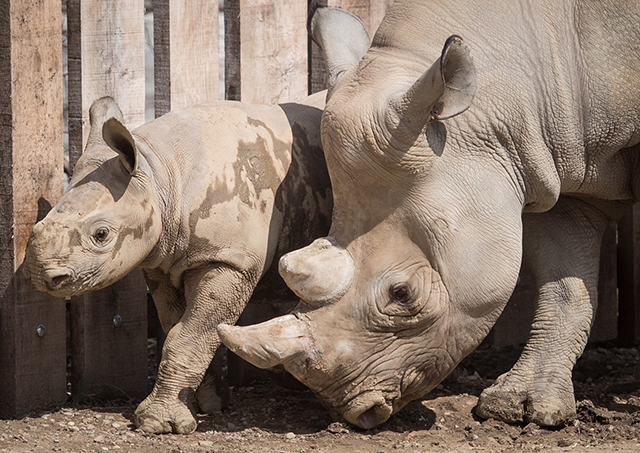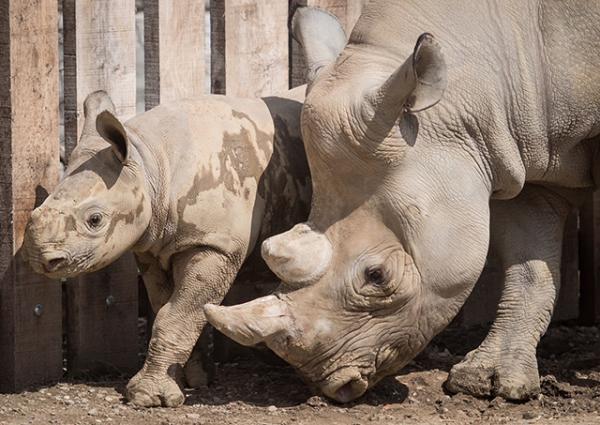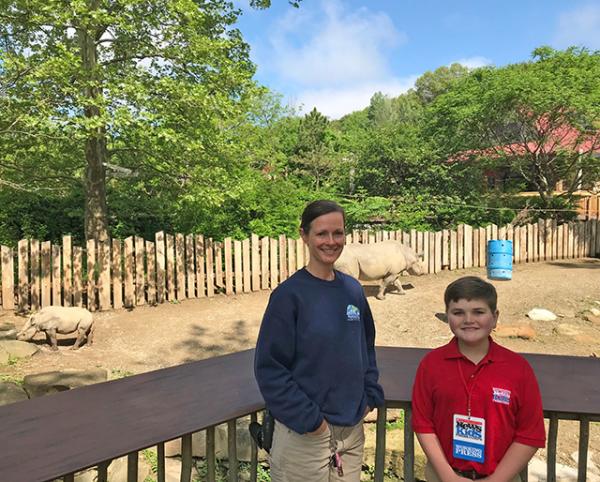KID REPORTERS’ NOTEBOOK
Lulu: The Rhino That Raises Awareness

WATCH THE VIDEO
Click below to see Lulu make her debut at the Cleveland Metroparks Zoo.
Lulu, an Eastern black rhinoceros, was born on February 7 at the Cleveland Metroparks Zoo in Ohio.
Eastern black rhinos, which are native to East Africa, are a critically endangered species. In the past decade, the rhinos have decreased in population by 40 percent.
Due to poaching for the animal’s horns and loss of habitat, there are only about 750 left in the wild, in the African country of Kenya.

Lulu, left, with her mother, Kibibbi, at the Cleveland Metroparks Zoo in Ohio
“LULU, THE AMBASSADOR”
Lulu’s birth is significant for the Eastern black rhino species. There are 48 such rhinos located in North American zoos affiliated with the Association of Zoos and Aquariums (AZA).
Four calves were born in 2017, and Lulu was the first of 2018. Another rhino at the Cleveland zoo is due to give birth this fall.
“Lulu is just over three months old and already weighs approximately 300 pounds,” says animal keeper Claire Winkler. “Although she is sweet and curious, she often stays close to her mother, Kibibbi.”
Winkler added that Lulu serves as an “ambassador” for the endangered species.

Nolan with Claire Winkler, animal keeper at the Cleveland Metroparks Zoo
THE PROBLEM OF POACHING
The baby rhino is a hit with visitors. “Lulu is a celebrity here at the zoo,” says Jeffrey Tolman, external communications coordinator. “This rhino calf is just so amazing to have here. She makes people aware of the major problem that these rhinos are facing.”
The horns of Eastern black rhinos are worth large sums of money. The horns are made from the same type of protein found in fingernails and hair. This material is called keratin.
Some people believe that when you grind a rhino horn, the dust from the horn has therapeutic properties.This belief makes Eastern black rhinos a prime target for poachers.
“Lulu shows the public that Eastern black rhinos need help,” says Winkler.

Nolan with Jeffrey Tolman, external communications coordinator at the zoo
The zoo held a naming contest to select Lulu’s name. Voters chose from three possibilities: Nya, Dalia, and Lulu. The names are popular in the area that is native to Eastern black rhinos.
In order to vote for a name, individuals made donations to the zoo’s conservation fund. Lulu, which means gem, got the most votes. The name seems especially fitting for the precious baby rhino.
